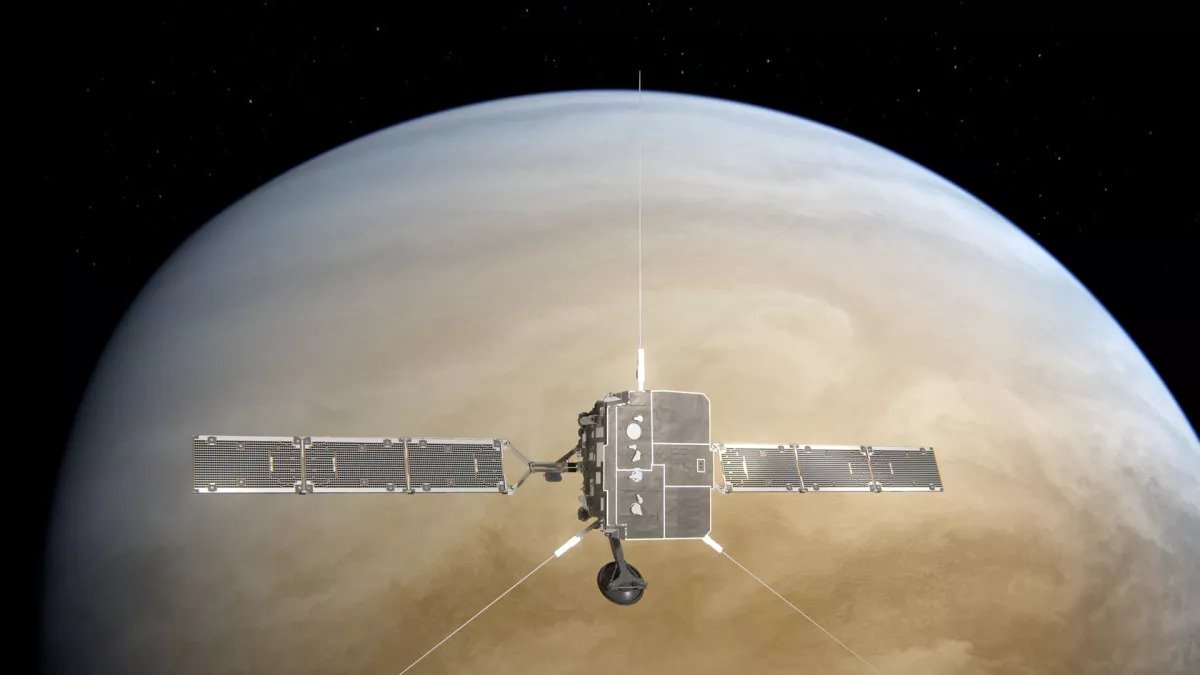The Solar Orbiter probe, which recently encountered a solar storm near Venus, measured the planet’s magnetic field. It indicates that the planet’s atmosphere regularly loses carbon dioxide.

Solar Orbiter Research
In early September, the Solar Orbiter probe, studying the Sun, was flying near Venus when it met with a solar storm, which was generated by a strong coronal mass ejection. The planet regularly encounters such events, but so far none of the devices operating in its orbit have studied how charged particles interact with its magnetic fields.
Venus does not have a global magnetic field similar to Earth’s, because its core is dead. But it has an induced magnetic field arising from the interaction of the planet’s atmosphere with the solar wind. In its past flights, Solar Orbiter measured it and found that it extends into space at a distance of at least 300 thousand km.
Now it has become clear that this field is capable of accelerating particles from the atmosphere of Venus to speeds of 2,200 km/s and bringing them into deep space. Over millions of years, this process can lead to significant losses of material from the atmosphere.
Loss of carbon dioxide
The atmosphere of Venus is 96 percent carbon dioxide. Under the action of solar wind particles and flares, this substance breaks down into carbon and oxygen ions. And they, like all charged particles, are accelerated by a magnetic field.
Knowing what the outflow of these ions is now, it is possible to estimate the loss of the atmosphere of Venus throughout its existence and find out if its atmosphere is once not as hot as it is now. However, there is too much carbon dioxide in the atmosphere of Venus for conditions to differ significantly in the past or in the future.
According to www.space.com
Follow us on Twitter to get the most interesting space news in time
https://twitter.com/ust_magazine

